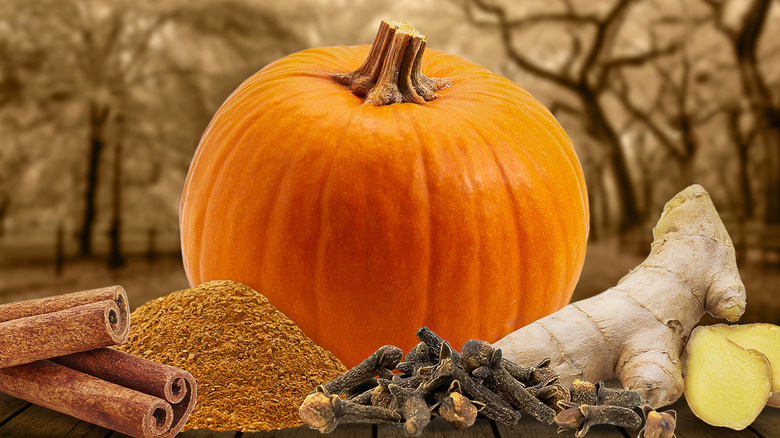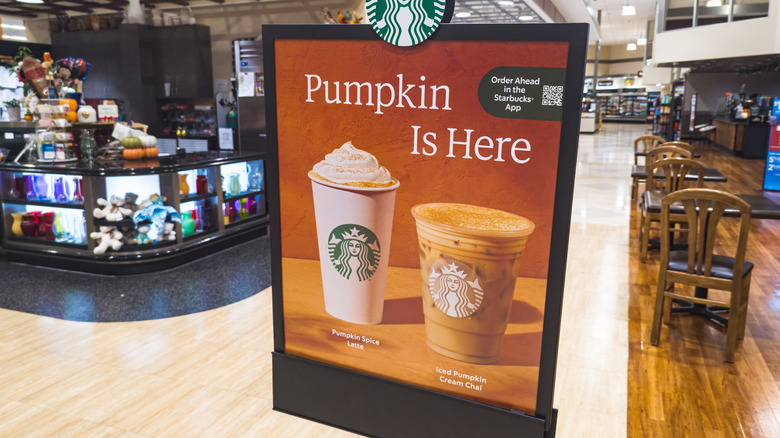This Is How Pumpkin Spice Became Associated With Fall
From the moment the first leaf crunches underfoot, autumn is in the air (no matter how hot it is), and many of us begin the American tradition of spending massive amounts on pumpkin spice-flavored products. We all know that pumpkin spice traditionally has no pumpkin in the mix whatsoever; it's usually made with a blend of cinnamon, nutmeg, ginger, and cloves or allspice. Yet, it remains possibly the biggest fall staple. The reason for this dates back to the 18th century, when Europeans decided that it suited them better to take spices through forceful means in order to obtain more of them at a lower cost and higher profit. Once plantations were established to propagate and maintain these spices outside of their region of origin, the spices became less scarce.
Prior to this, spices were expensive and were typically only available to the wealthy, or for important meals. The most lavish dishes would be served around holidays like Christmas, or grand occasions; a tradition carried into America as home cooks used the beloved pumpkin spice (or a similar blend) to flavor a squash and custard pie that would become pumpkin pie. The first actual record of a pumpkin pie in America appeared in a cookbook published in 1776 titled "American Cookery," by Amelia Simmons. Flavoring squash with the blend of spices that would become known as pumpkin spice was history in the making, and had people looking forward to squash season for hundreds of years. But when did pumpkin spice become the icon it is today?
The rise of pumpkin spice
These days, learning how to DIY your own pumpkin pie spice blend is easy, but so is buying a premade mix from the grocery store. In 1934, McCormick & Company made lives easier when it launched a premade pumpkin pie spice blend. The popularity of the jarred spice soared even further, and it became the singular flavor associated with pumpkin pie. Over time, people used the blend in other foods as well. Now, not only will you find pumpkin spice in vintage fall recipes you never see anymore, but you'll find it in everything else, from marshmallows to your favorite drink. In a survey, McCormick found that 72% of participants use the spice blend at least once per week, with 25% of those people claiming they use it every day.
Unless you're eating pumpkin pie every day (Kudos to you, if you are), you likely enjoy pumpkin spice in something like a drink. In 2003, Starbucks launched the Pumpkin Spice Latte, and now the PSL's hold on autumn makes it seem like you're breaking the rules, venturing into a pumpkin patch without one. While the pumpkin spice blend has been used to flavor squash for centuries, its lack of actual pumpkin doesn't stand in the way of its rule over autumnal treats. This could be because of associative memories. Even without actual pumpkin, many of us relate these unique flavors to pumpkin pie, which we then connect to fall. In our happy, treat-loving minds, this means that anything flavored with a pumpkin spice blend is actually packed with our favorite flavors of fall.

